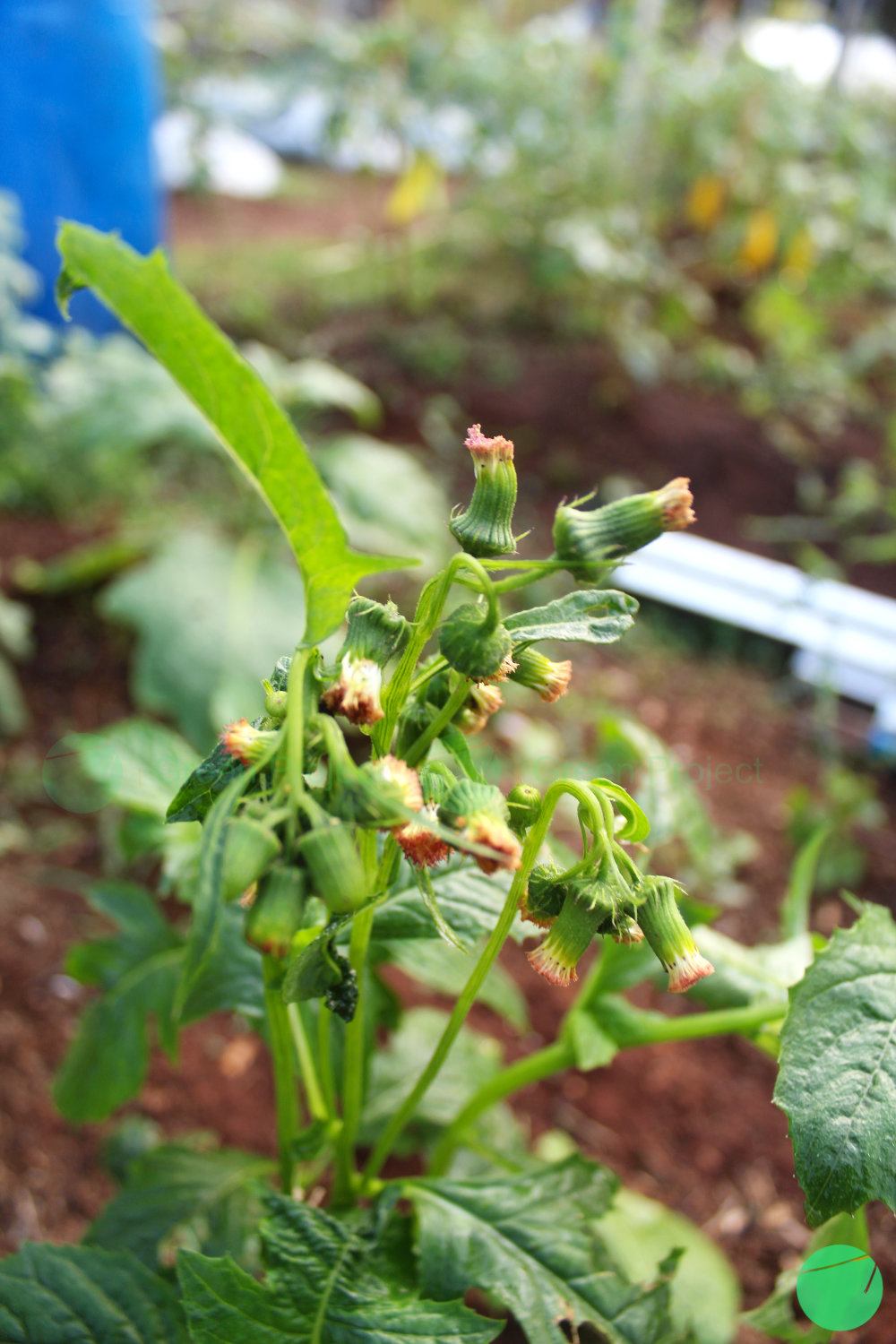Naming Identity
The sintrong plant is scientifically named in Latin as Crassocephalum crepidioides (Benth.) S. Moore. In English, this plant is known as redflower ragleaf or thickhead. In Indonesia, other names are jukut jamalok, jewor or sintrong.
In China this plant is known as ye tong hao, benibanaborogiku in Japan, bulak manok in the Philippines and phat pet maeo in Thailand.
Taxonomy
Domain | Eukaryota |
Kingdom | Plantae |
Phylum | Spermatophyta |
Class | Dicotyledonae |
Order | Asterales |
Family | Asteraceae |
Genus | Crassocephalum |
Species | Crassocephalum crepidioides |
Origin
Thickhead originates from tropical regions, northern Africa and Madagascar, which then spread to many countries in East Asia including China, Tibet, Korea and Japan, South Asia which includes India, Nepal and, Sri Lanka and Southeast Asia which includes Indonesia, the Philippines. , Thailand, Laos, Myanmar, Malaysia and Vietnam (Crassocephalum Crepidioides (Benth.) S.Moore | Plants of the World Online | Kew Science, 2014).
Shape Description
Thickhead is an aromatic annual herbaceous plant that grows upright and has few branches with a height that can reach up to 40 to 100 cm. This plant is also said to only grow in one season.
Its soft, sturdy, ribbed stem is round in cross-section and releases a thin liquid when cut. The apical part is covered with thick short hairs while the lower part is bare.
The leaves are arranged alternately along the stem in varying shapes. The upper leaves tend to be smaller and generally elliptical in shape while the lower leaves are larger and have two lobes at the base. However, all the leaves of this plant have serrated edges.
The flower head at the terminal is cylindrical in shape with a length of 13 - 16 mm and a width of 5 - 6 mm. Flowers profusely and are homogamous which bend when the flowers open. The flowers are bisexual with a yellow corolla that is a slender tube and measures 9 to 11 mm long.
The seeds of this plant are usually dispersed by wind or air and can be found several meters from where the parent plant was in the previous season (Factsheet - Crassocephalum Crepidioides, 2023).

Habitats
Thickhead generally attacks bare areas but disappears when there is shade. This plant is also recorded as growing on fertile land, riverbanks, and roadsides and as a weed that attacks tea and chinchoma plantations, especially in wet areas and in highland rice fields. It can also be seen on newly opened or existing shifting cultivation lands, waste lands, orchards, coffee plantations and newly planted grasslands (Rojas‐Sandoval & Acevedo‐Rodríguez, 2022).
Thickhead as Weed
Thickhead plants have been recorded as weeds on tea plantations in Indonesia. In Sri Lanka, this plant is a common weed that spreads in tea plantations in the highlands.
Similarity to the Species Erechtites valerianifolia
The thickhead plant is often confused with the Erechtites valerianifolia or Brazilian fireweed plant. However, the two species actually have differences that are easy to see.
Thickhead or Crassocephalum crepidioides has relatively fewer shoots and flowers than the Erechtites valerianifolia species. The plant of the species Erechtites valerianifolia is also said to have prominent ribbed stems and light purple flowers (Factsheet - Crassocephalum Crepidioides, 2023).
Benefits of Thickhead for Health and Other Uses
Thickhead has become a food ingredient in many countries in Africa. In West and Central Africa the succulent leaves and stems are consumed as a vegetable in soups and stews. In Sierra Leone, the leaves are popular enough to be made into a sauce with peanut paste. In Australia, this species is consumed as a green salad in raw or cooked form (Rojas‐Sandoval & Acevedo‐Rodríguez, 2022).
Thickhead in many countries is also a vegetable ingredient that is widely traded commercially. As an ingredient for consumption, thickhead is said to be a good source of protein for humans and animals.
Traditionally, especially the leaves, are used to treat stomach ulcers, digestive disorders, burns, treat wounds, stomach ulcers, and skin-related conditions (Silalahi, 2022). Several bioactive compounds have been found in thickhead species of plants. The leaves contain phenolic and flavonoid compounds as well as essential oils containing β-cubebene, α-farnesene, and α-caryophyllene (Nguyen Minh Can & Đặng Thị Phương Thảo, 2020).
Not only is it used as a medicine in various traditional medicines, thickhead is also said to be proven to be used as a trap plant for collecting adult tuber beetles in banana plantations (Crassocephalum Crepidioides Okinawa Spinach, Redflower Ragleaf, Fireweed PFAF Plant Database, 2023) and forage for livestock and poultry (Rojas‐Sandoval & Acevedo‐Rodríguez, 2022).